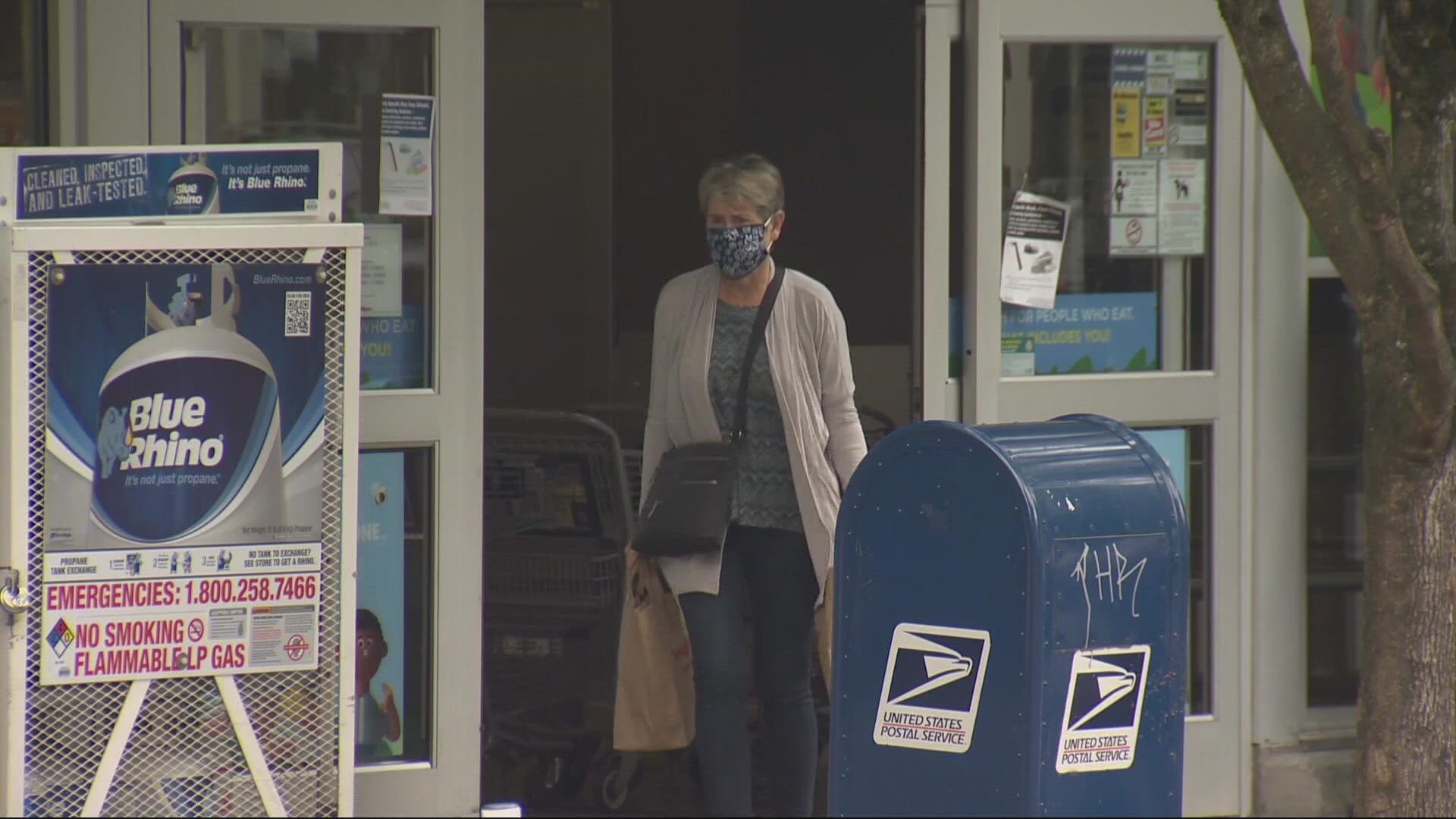PORTLAND, Oregon — In June, Gov. Kate Brown declared Oregon open for business. The announcement ended most COVID-19 restrictions as the state came very close to hitting a key metric: 70% of eligible adults getting vaccinated. That metric gave a clear target for the public to focus on reaching — and knowing when they reached it, restrictions would end.
Unfortunately, that didn't last. The delta variant soon took hold and turned the state's declining COVID cases and hospitalizations upside down.
Just over a month later, Gov. Brown reinstated mask mandates for both indoor spaces and large outdoor events. But this time, the state did not say what it would take to drop those rules — and months later, still hasn't. Outside experts disagree with that strategy.
“I think it is a mistake that Oregon doesn’t have metrics,” said Dr. Monica Gandhi, an infectious disease doctor and professor of medicine at the University of California, San Francisco.
She specializes in HIV. She has seen how missteps and a loss of trust hurt the effort to fight the disease in the early days.
Dr. Gandhi said a lack of metrics now with COVID-19 mandates threatens the public's trust.
“It is imperative that we retain, as a populous, trust in public health officials. When mandates are put into place for public health emergencies they have to be accompanied by metrics of when they come off and what constitutes a reason to come off. Otherwise I am worried that it looks like restrictions without clean, data-based metrics,” she said.
Multnomah County Commissioner Sharon Meieran is a medical doctor. She is also worried about a lack of clear goals for ending restrictions, and thinks the outdoor mandate — requiring masks any time you cannot stay 6 feet away from people who are outside your household — has outlived its usefulness.
“From what I can see, when it comes to wearing masks outdoors, the evidence suggests if someone is vaccinated and they're in an outdoor setting — unless it’s literally standing room only, there’s very low risk of COVID transmission. Even when people are unmasked," Meiran said. "So I would say unless the state can show me the evidence of why they're not lifting the restriction, that it should be lifted."
The state of Oregon did not have any public officials available for an interview. State Epidemiologist Dean Sidelinger said in a statement that it’s difficult to come up with specific metrics because the virus is unpredictable. He added that the Oregon Health Authority is watching COVID-19 hospitalizations, hospital capacity and case rates, and that those metrics need to fall even more before restrictions are dropped.
State Sen. Elizabeth Steiner Hayward, also a medical doctor, thinks it is reasonable for the state to move slowly.
“I think the state is being appropriately cautious to say until we're confident that our immunization rates are high enough and our case rates are low enough, setting metrics may make people more careless,” she said.
Multnomah County's public health officer thinks it is important for the public to know what it will take to drop the mandates.
“I do worry about that, because I think the public deserves to have some sense of where we are and where we're headed,” said Dr. Jennifer Vines.
Dr. Vines said the hard part is coming up with the metrics, since vaccine breakthrough cases may elevate a case count, but those cases are typically less severe.
“I generally foresee continued use of masks through the winter. I do think that as we think about peeling back masks in particular, I think stopping outdoor use is a great place to start. Masks are much more important for prevention indoors. Much less so outdoors,” Dr. Vines said.
This all leads back to Dr. Gandhi’s main point: tell the people what it will take to end restrictions.
“Where you lose your trust is when you indicate there's a prolonged public health measure, restrictions, without cleanly telling the population when do they come off. What is it? Is it a vaccination rate? Plus a hospitalization rate? Is it linked to the available child vaccine? Just give clear metrics! If we lose our trust in public health officials, we have a lot of other public health things coming up that we need to trust them,” she said.
Dr. Gandhi recommends a vaccination rate of 80% or more for those eligible in the region, along with a hospitalization rate of 10 per 100,000 people, as preferred metrics to begin lifting COVID restrictions.
Have a comment or story idea for reporter Pat Dooris? Email him at pdooris@kgw.com.

